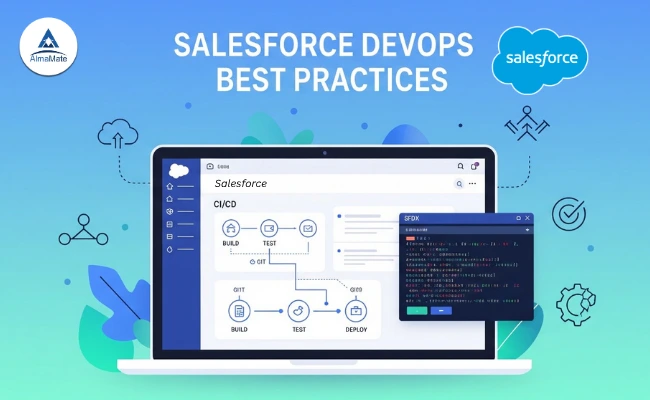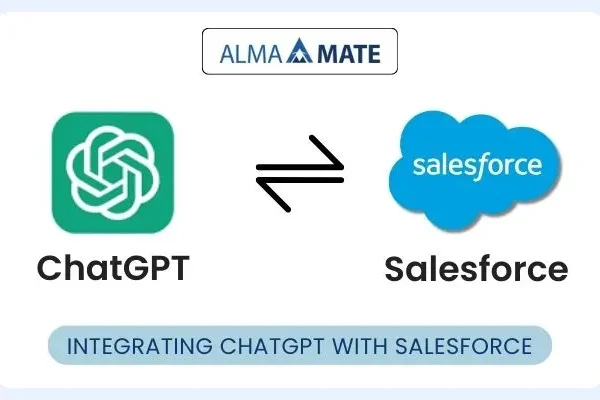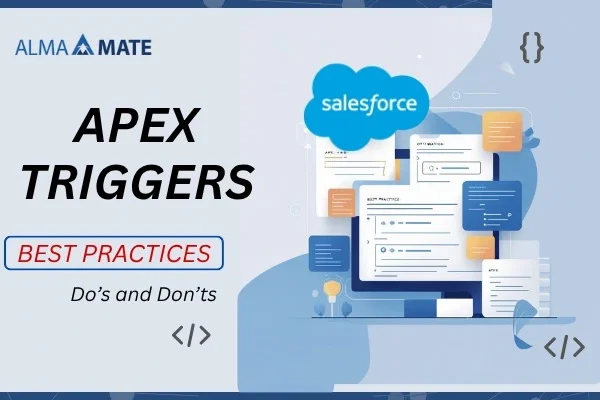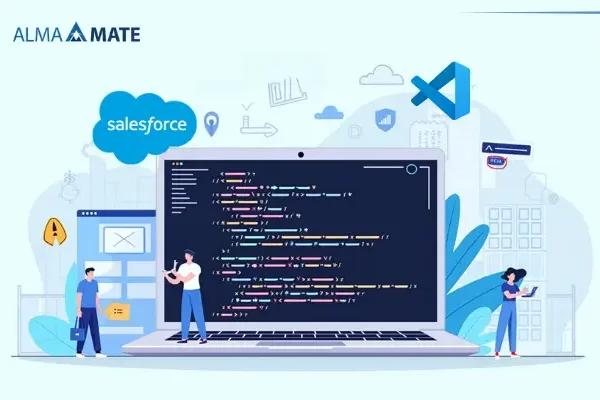
Table of Contents
Ever had that heart-in-your-throat moment when you’re about to push a change in your live Salesforce system, and a tiny voice at the back of your head screams, “What if this breaks everything?”. In the complex world of Salesforce, where your customer data, sales processes, and service operations live, making direct changes can feel like performing surgery in the dark. That’s precisely why Salesforce Sandboxes aren’t just a feature—they are a Salesforce user’s lifeline.
What is a Salesforce Sandbox?
Alright, let’s break it down. Imagine you’ve got this amazing, intricate Lego castle – that’s your live Salesforce production environment. Now, if you want to add a new tower or change the drawbridge mechanism, you wouldn’t start yanking bricks off the main castle, right? You’d build a copy, a duplicate castle, on a separate table, to try things out. Those separate tables and duplicate castles are your Salesforce Sandboxes.
It’s a replica of your Salesforce org, an isolated space where your admins, developers, and even your curious super-users can get their hands dirty. They can build new stuff, test wild ideas, configure complex workflows, or even learn the ropes, all without a shred of risk to your actual, business-critical data and setup. It’s your R&D lab, your training ground, and your pre-flight checklist, all rolled into one. It’s where mistakes are just lessons, not revenue-denting disasters.
Understanding the Need for Salesforce Sandboxes
Look, if you’re doing anything more than just basic data entry or running standard reports in Salesforce, Salesforce sandboxes shift from being a “nice-to-have” to a “can’t-live-without.” Skipping Salesforce Sandboxes is like thinking you can win a race by just showing up on race day without any practice laps.
(Benefits, Sandbox vs Production and Use Cases)
Let’s talk about the tangible wins here:
- Risk Mitigation: This is the showstopper. You built that fancy new automation. It looks great on paper. But then, in the sandbox, you find that it accidentally triggers a thousand emails to your top clients. Crisis averted. That kind of testing happens in Salesforce Sandboxes, keeping your live system pristine and your reputation intact.
- Letting Creativity Flow: Developers and admins are problem solvers by nature. Give them a safe space, and they’ll come up with amazing solutions. Salesforce Sandboxes are that space. Want to explore a crazy idea for a new process? Go for it. Test out that shiny new feature from the latest Salesforce release? No problem. Innovation thrives when the fear of breaking things is removed.
- Testing That Actually Means Something: A sandbox, especially one with a good chunk of your real data (we’ll get to types later), lets you see how new features really behave. Will that new discount logic correctly handle your complex product bundles? Salesforce sandboxes will tell you.
- Training Wheels for Your Team: How do you get new hires up to speed without letting them loose on live customer accounts? You guessed it: Salesforce sandboxes. They can click every button, explore every menu, and even (intentionally or otherwise) “break” things, all while your real data stays intact.
- Smoother Teamwork: Got a few developers cooking up different features? Salesforce Sandboxes give each of them their own kitchen. No more stepping on toes or developers overwriting each other’s brilliant code. It’s just much cleaner.
- Keeping Stakeholders Happy (and Informed): Before you flip the switch on a big new feature, wouldn’t it be great if your sales manager or head of service could see it and use it with familiar-looking data? That’s User Acceptance Testing (UAT) in Salesforce sandboxes, and it’s a great way for detecting misunderstandings early.
Sandbox vs. Production
It’s crucial to get this straight:
- Production: This is the main stage. Your live, breathing Salesforce org. Real customers, real deals, real money. You guard this like Fort Knox. Changes here are serious business.
- Sandbox: This is the rehearsal room, the workshop. It’s a copy. The data is for testing, training, or development. If it goes sideways here, you learn, reset, and try again. No real-world fallout.
Use Cases
You’ll find yourself reaching for Salesforce sandboxes for all sorts of things:
- Whipping up custom Apex code, Lightning Web Components, or those trusty old Visualforce pages.
- Tinkering with configurations – new objects, fields, complex approval processes, Flows that automate half your business.
- All kinds of testing: developers checking their own code (unit tests), QA teams trying to break things, business users giving the final thumbs-up (UAT).
- Taking new AppExchange apps for a spin before you commit.
- Building and testing those vital links to your other business systems (integrations).
- Getting everything lined up and triple-checked before a big go-live (staging).
- When a weird bug pops up in production and you need a safe place to replicate it.
Types of Salesforce Sandboxes
Salesforce knows that not all development and testing needs are created equal. So, they give us a menu of sandbox types. Picking the right one for the job is key – you don’t want to use a sledgehammer to crack a nut, right?
Developer Sandbox
This is your most basic, bread-and-butter sandbox. Great for individual developers or admins working on a specific piece of the puzzle.
- What’s Inside? It’s like getting the architectural blueprints of your Salesforce house – all your metadata (custom fields, objects, code, layouts, etc.) is there. But, there’s no furniture or people inside – zero of your actual production data (no accounts, no contacts).
- How Much Space? Pretty limited on the storage front (think 200MB for data and files). But that’s usually fine for metadata and a bit of test data you cook up yourself.
- How Often Can I Freshen It Up? Once a day. A “refresh” basically throws out the old sandbox contents and gives you a brand-new copy of your production metadata.
- Perfect For: Building a new Apex trigger, trying out a validation rule, isolated unit testing, or letting a single admin learn how to create a new field without any fuss. They’re quick to create and refresh, so they’re super agile.
Developer Pro Sandbox
Think of the Developer Pro as the Developer Sandbox’s slightly bigger, stronger sibling. It’s still all about the metadata, not production data.
- What’s Inside? Same deal: all your production metadata, no actual business records.
- How Much Space? This is where it steps up – you get more storage (typically 1GB for data and files). This means you can handle larger sets of test data (that you’d still create or load yourself) or tackle more complex development tasks.
- How Often Can I Freshen It Up? Daily, just like its smaller counterpart.
- Perfect For: When your development task needs more test data than a basic Developer sandbox can comfortably hold. Good for some types of integration testing or for a QA team that’s okay with creating their own focused data sets. Maybe a shared environment for a couple of developers working closely on a module.
Partial Copy Sandbox
This is where you start to see some of your actual production data in a test environment.
- What’s Inside? You get all your production metadata, plus a sample of your production data. And here’s the clever bit: you use something called a “sandbox template” to tell Salesforce which records to grab. So, you might say, “Give me all accounts created last month in the West region, and their related opportunities and contacts.”
- How Much Space? A decent chunk – usually 5GB for data, and your file storage matches whatever your production org has.
- How Often Can I Freshen It Up? Every 5 days. Copying data, even a part of it, takes more effort.
- Perfect For: This is a sweet spot for a lot of Quality Assurance (QA) work. Testers get to work with data that looks and feels real, which is invaluable. Great for User Acceptance Testing (UAT) too, and for training sessions where realistic scenarios are important. The key is that sandbox template – a well-thought-out template makes these sandboxes incredibly useful.
Full Sandbox
This is the big one. A Full Sandbox aims to be a complete mirror image of your production environment.
- What’s Inside? Everything. All your metadata and all your data – every single account, contact, opportunity, custom object record, attachment, Chatter feed, you name it. It even copies user info (though Salesforce cleverly tweaks usernames to avoid production conflicts).
- How Much Space? Same as your production org. It’s a full clone, after all.
- How Often Can I Freshen It Up? Only every 29 days. And be warned, refreshing a Full Sandbox in Salesforce can take a while – hours, sometimes even a day or two if your org is massive. It’s a serious operation.
- Perfect For: This is your go-to for things like performance testing or load testing. How will your customizations hold up when slammed with all your production data? Only a Full Sandbox in Salesforce can tell you that accurately. It’s also the gold standard for staging – the final dress rehearsal before a major release. And if you’ve got one of those super tricky bugs that only seems to happen with very specific data combinations in production, a Full Sandbox in Salesforce is often the only place to reliably replicate and squash it. One huge caveat: because it has all your real data, you need to be super careful about security and potentially use data masking if sensitive info is involved.
Choosing the Right Sandbox
Okay, so you’ve got options. How do you choose? It’s not about always grabbing the Full Sandbox because it’s the “biggest.” It’s about being smart and matching the sandbox in Salesforce to what you’re trying to do.
- What’s the objective?
- Just coding a new Apex class or building a Flow? A Developer or Developer Pro is your friend – quick, easy & no fuss.
- Need to see how that Flow interacts with real data? Partial Copy often hits the mark.
- Stress-testing the system before that global rollout? Gotta be a Full Sandbox in Salesforce. There’s no substitute.
- Training newbies on basic navigation? Developer is fine. Training them on complex sales processes with sample data? Partial Copy.
- What data do you really need?
- If you can get by without production data, or if creating a small, specific test dataset is easy, Developer/Developer Pro keeps things lean.
- If seeing real data patterns and relationships is crucial for your testing (but you don’t need every single record), opt for Partial Copy.
- If your testing depends on the full production dataset (think performance, or data-specific bugs), then what you need is a Full Sandbox in Salesforce.
- How fresh does it need to be?
- If you’re iterating fast on code and need the latest metadata from production daily, Developer/Developer Pro is built for that.
- If your testing cycles are a bit longer, the 5-day (Partial) or 29-day (Full) refresh cycles might be perfectly fine. You just need to plan around them.
- How many sandbox licenses do you have? Let’s be real, your Salesforce edition comes with a certain number. You can buy more, but they cost money. So, you need to be a bit strategic about who gets what, especially those precious Full Salesforce Sandboxes.
Most companies end up using a mix. Developers experiment in their Developer sandboxes, then changes get pooled into a Developer Pro or Partial Copy for integration and QA testing, and finally, everything gets validated in a Full sandbox in Salesforce before the big leap to production.
Sandbox Management Best Practices
Alright, so you’ve got your Salesforce sandboxes. Don’t just let them become a digital wasteland. A bit of good housekeeping and some smart habits will make them way more valuable.
- Refresh with a Plan, Not Panic: Don’t just hit “Refresh” whenever you feel like it. Schedule your refreshes, especially for Partial and Full sandboxes. Line them up with your project timelines – before a big QA cycle, before UAT starts. And inform everyone when it’s happening.
- Name Them Sensibly: Sandbox1, Test2 – nope. Not helpful. Use a clear naming convention. Something like Dev_ProjectPhoenix_SarahK or UAT_Q3Release_PartialCopy tells you instantly what it is, who might be using it, and what it’s for.
- Garbage In, Garbage Out (Data Edition): For Partial Copies, spend a bit of time on those sandbox templates. Make sure you’re pulling in data that’s actually useful for testing. For Developer/Pro, have a plan for getting good test data in there; don’t just use junk.
- Lock Down Access: Just like in production, not everyone needs the keys to the kingdom in every sandbox in Salesforce. Use appropriate permissions. And for testing, try to give testers profiles that match their real production access – it makes for much more accurate testing. Kick out users who don’t need access anymore.
- Track Your Changes: Native Change Sets are okay for simple stuff, but for anything more complex, you need to be thinking about version control (like Git). It’s a lifesaver for tracking who changed what, when, and why, and for rolling back if things go haywire. Salesforce DX really nudges you in this direction.
- Handle Sensitive Data Carefully: If your Full or Partial Salesforce sandboxes have real customer data (and they often do), you’ve got to think about data security. Look into data masking or anonymization tools and processes. This is super important, especially with privacy regulations getting tighter.
- Practice Your Deployments: Before you try to deploy to production, always do a validation (a “test deploy”) first. And for Full Salesforce sandboxes, try to simulate the entire deployment process as closely as possible. It’ll save you a lot of time and effort later.
- Don’t Be a Sandbox Hoarder: Unused Salesforce sandboxes just sitting there? They consume licenses and create clutter. If a sandbox has served its purpose and is just gathering digital dust, either refresh it for a new purpose or delete it.
- Write Down Your Strategy: It doesn’t have to be a novel, but have some basic documentation on your sandbox types, how changes flow between them, your refresh policy, and who’s responsible for what. It helps everyone stay on the same page.
Tools & Resources to Enhance Sandbox Usage
While sandboxes themselves are awesome, there’s a whole ecosystem of tools and resources out there that can make working with them even better:
- Salesforce DX: This isn’t just one tool; it’s a whole mindset and a suite of things like the Salesforce CLI (Command Line Interface), Salesforce Extensions for VS Code (a way better code editor), and “scratch orgs” (super cool, disposable orgs for development). If you’re serious about Salesforce development, you need to be looking at DX.
- Version Control (Git, GitHub, GitLab, etc): Using Git to manage your metadata (your code, your configurations) is a game-changer for teamwork & tracking.
- Data Loaders (Salesforce’s own, or things like Dataloader.io): These are handy for getting specific sets of test data into your Developer or Developer Pro sandboxes, or for pulling data out for analysis.
- VS Code (with Salesforce Extensions): If your developers are still using the Developer Console in the browser for coding, ask them to use VS Code.
- DevOps Tools from the AppExchange (Copado, Gearset, Flosum, AutoRABIT, to name a few): For larger teams or more complex Salesforce setups, these tools can automate your deployments, integrate tightly with version control, help with data migration, and generally make your whole release process smoother and more reliable. They’re often a significant step up from native Change Sets.
- Trailhead (Salesforce’s Free Learning Platform): If you haven’t explored Trailhead yet, you’re missing out. There are tons of great modules on everything from basic sandbox concepts to advanced Salesforce DX techniques. It’s an amazing resource.
Conclusion
Sandboxes Aren’t Optional, They’re Essential. Look, in the fast-moving world of Salesforce, things are always changing. Your business needs to evolve; Salesforce itself rolls out new features three times a year, and your users are always asking for improvements. Sandboxes are what let you manage all that change without constant firefighting.
They’re your safety net, yes, but they’re also your innovation lab. They let you build with confidence, test with rigor, and train your teams effectively, all while your live production environment keeps humming along, making you money. Getting smart about what kind of sandboxes you need, using them wisely, and managing them well isn’t just about avoiding headaches – it’s about making your Salesforce investment truly pay off. It’s how you keep your Salesforce org healthy, robust, and ready for whatever comes next. So, treat your sandboxes well; and they’ll return the favour!
Understanding the different types of Salesforce Sandboxes is just the beginning. At AlmaMate Info Tech, we empower professionals and businesses alike to make the most of their Salesforce ecosystem through our comprehensive training programs and end-to-end development services.
Whether you’re an aspiring Salesforce developer looking to practice in real-time sandbox environments or a business seeking to build scalable, custom Salesforce solutions, we’ve got you covered.
Our Services Include:
- Salesforce Master Training Program with live projects, sandbox practice, and expert mentorship
- Salesforce Certification Guidance to help you clear exams with confidence
- Custom Salesforce Development – from CRM implementation to automation and integration
- Post-Deployment Support and best-practice consulting for optimized performance
With a proven track record in training 10,000+ professionals and delivering robust Salesforce solutions to enterprises, AlmaMate is your trusted partner in the Salesforce domain.















